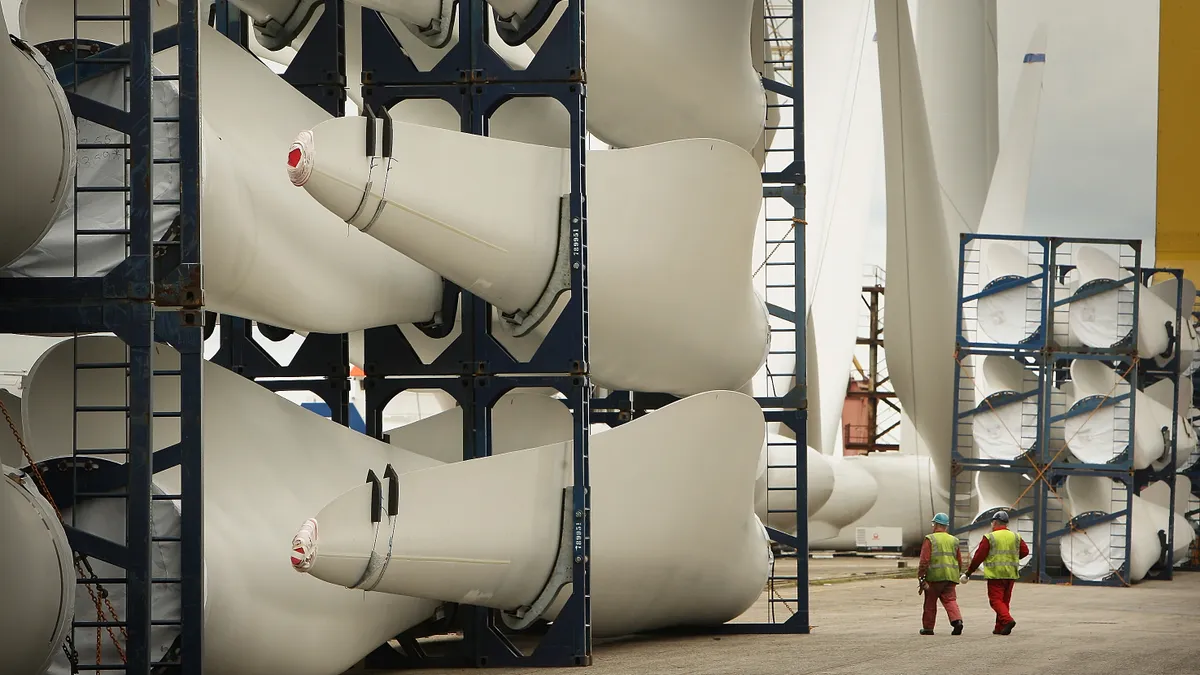Dive Brief:
- The Department of Energy announced Wednesday that it will award a total of $5.1 million in cash prizes to contest participants who innovate technologies for recycling the fiber-reinforced composites and rare earth elements in wind turbines.
- Around 85% to 90% of the mass of a wind turbine can already be commercially recycled, but the remaining components present a barrier to a circular economy for wind turbines, according to DOE.
- “There is a financial risk involved” for the private sector when transitioning to a circular economy, said Tyler Christoffel, DOE’s technology manager for its Wind Energy Technologies Office, in an interview. DOE hopes the cash prizes will mitigate that risk, he said.
Dive Insight:
Submissions to participate in the contest’s first round opened Wednesday and close Sept. 29. In the first round, competitors will provide a concept for wind material recycling in the hopes of securing a $75,000 cash prize and an invitation to the second phase of the competition.
In the second phase, competitors will develop prototypes of their innovations, with up to six teams receiving cash prizes of $500,000 and vouchers to work with DOE national laboratories. The competition is part of DOE’s American-Made program.
Christoffel said that barriers to a circular economy for wind turbines include a lack of cost-effective strategies for recycling fiber-reinforced composites and rare earth elements.
“A lot of the rare earth materials are surrounded by other metals that are recycled right now, and the amount of the rare earth element material is relatively low compared to the material around it,” he said. “So companies have found difficulty in justifying the extra work it takes to separate out that material and divert it.”
Improvements to end-of-life recycling techniques would “make it a lot easier for entities that are responsible for decommissioning to justify investing in diverting those materials into these more sustainable pathways,” said Christoffel.
This bid for innovations is part of the Biden administration’s overall push to bolster the domestic supply chain of rare earth minerals and break U.S. dependence on foreign sources of those materials, including China.
A 2022 White House release estimated that a global clean energy transition will result in demand for rare earth elements, as well as lithium and cobalt — which are needed for batteries, wind turbines and solar panels — to skyrocket by 400% to 600% over the next few decades.
In addition to making it cheaper to build wind turbines themselves, Christoffel said that successful commercial recycling for every aspect of wind turbines would assist with overall decarbonization.
“When material can be used for a second life, especially when you can minimize the intervention that has to happen between taking material from one life into another one, then you see twice the functionality of the material for a significantly reduced emissions impact,” he said.














